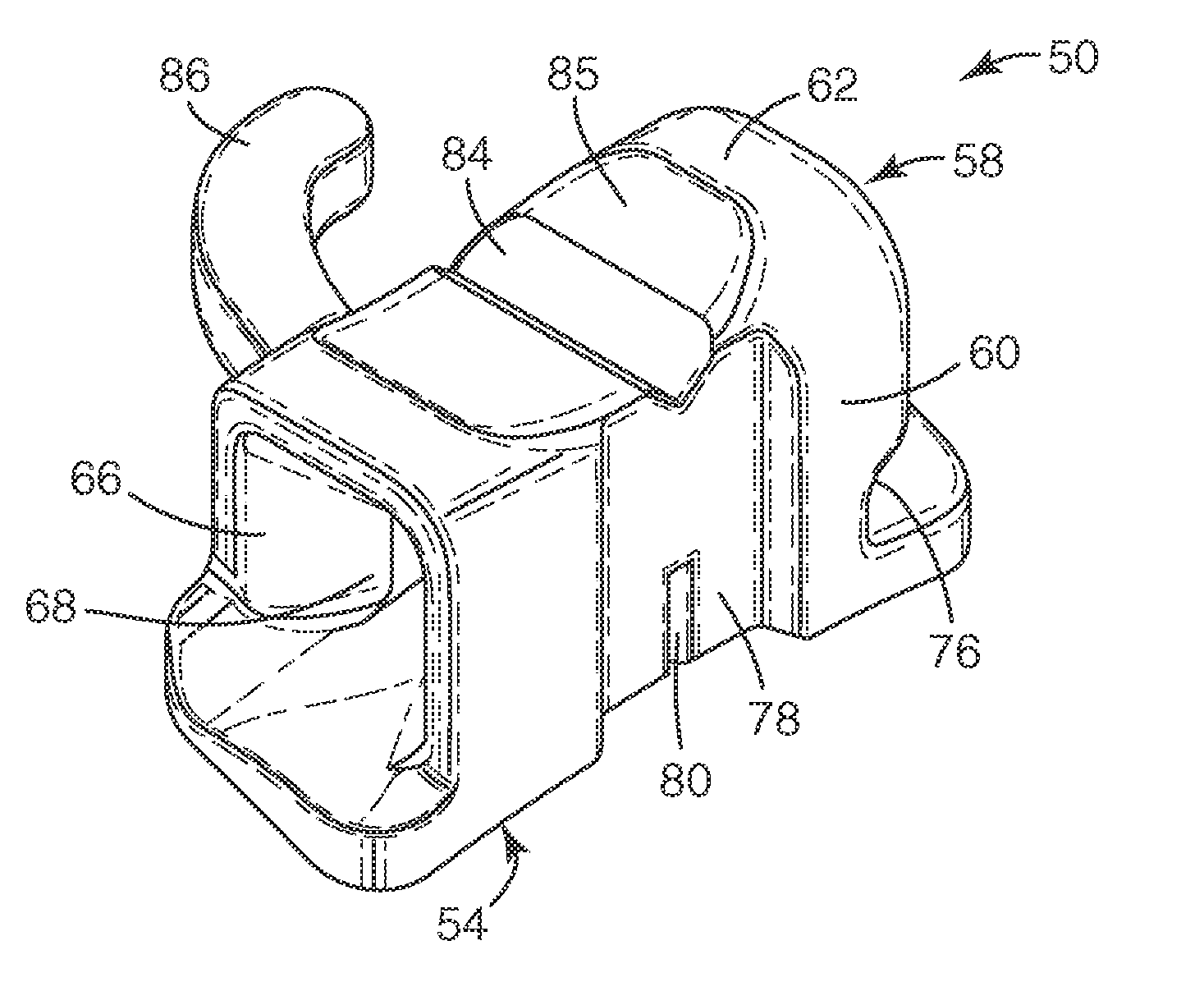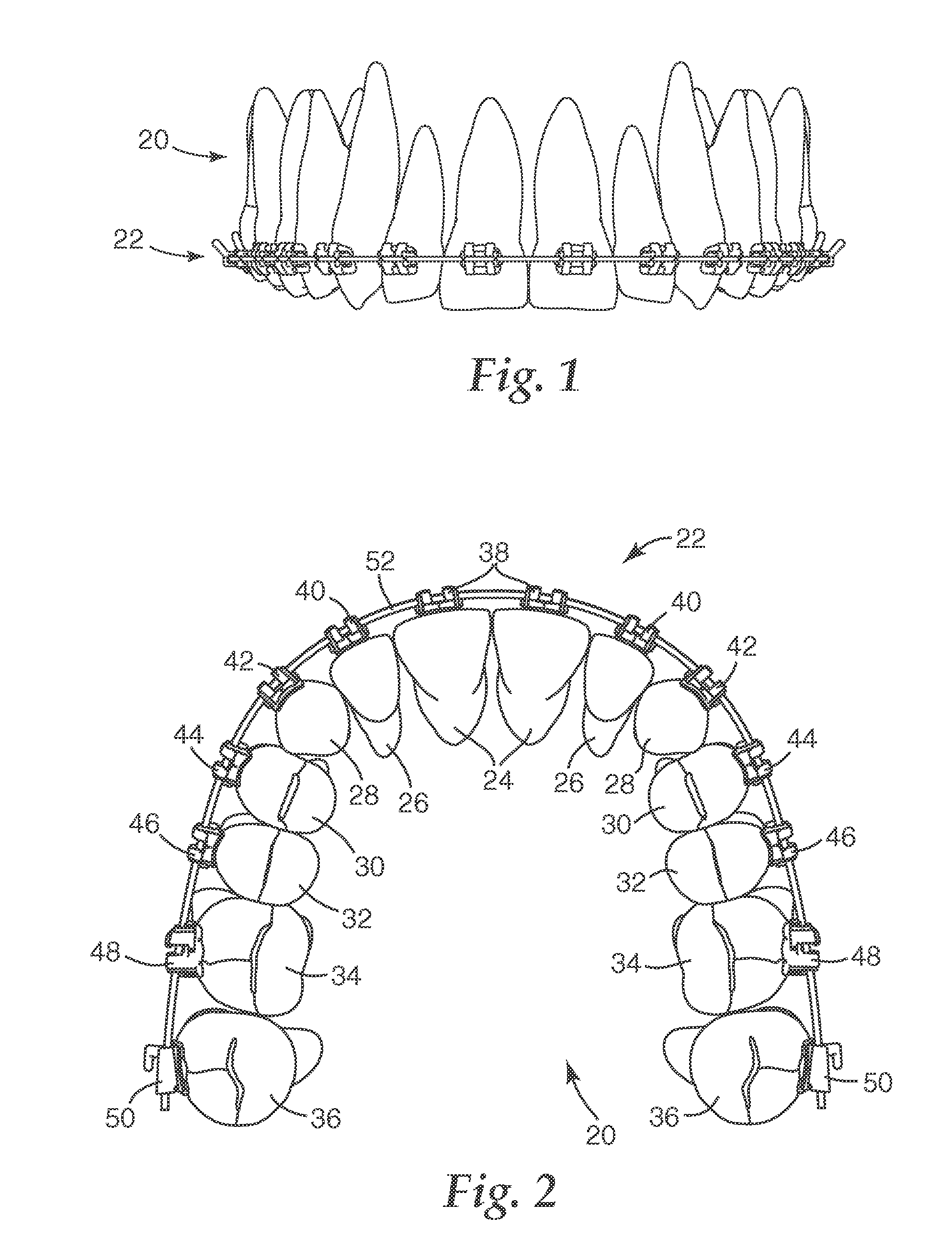Molar appliance for an orthodontic brace
a technology for orthodontic braces and molars, applied in the field of orthodontic appliances, can solve problems such as inadequate torque in the construction of teeth, and achieve the effect of improving the orientation of the maxillary second molar tooth and improving the occlusion of other teeth
- Summary
- Abstract
- Description
- Claims
- Application Information
AI Technical Summary
Benefits of technology
Problems solved by technology
Method used
Image
Examples
Embodiment Construction
[0032]FIG. 1 illustrates an example of an upper dental arch 20 of an orthodontic patient that is undergoing orthodontic therapy. An orthodontic brace, broadly designated by the numeral 22, is connected to the teeth of the upper dental arch 20. The brace 22 includes a set of appliances along with an archwire that is received in the appliances, as will be described in more detail below.
[0033]FIG. 2 is an enlarged view of the upper dental arch 20 along with the brace 22, looking in an upwardly direction toward the outer or occlusal tips of the teeth. The upper dental arch 22 includes a left quadrant and a right quadrant, each of which has a central incisor tooth 24, a lateral incisor tooth 26, a cuspid tooth 28, a first bicuspid tooth 30, and a second bicuspid tooth 32. In addition, each of the left and right quadrants includes a first molar tooth 34 and a second molar tooth 36.
[0034] The illustration of the upper dental arch 22 shown in FIGS. 1 and 2 is only one example of dentition...
PUM
 Login to View More
Login to View More Abstract
Description
Claims
Application Information
 Login to View More
Login to View More - R&D
- Intellectual Property
- Life Sciences
- Materials
- Tech Scout
- Unparalleled Data Quality
- Higher Quality Content
- 60% Fewer Hallucinations
Browse by: Latest US Patents, China's latest patents, Technical Efficacy Thesaurus, Application Domain, Technology Topic, Popular Technical Reports.
© 2025 PatSnap. All rights reserved.Legal|Privacy policy|Modern Slavery Act Transparency Statement|Sitemap|About US| Contact US: help@patsnap.com



